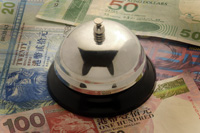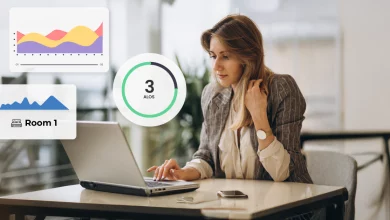What should you take into account when determining the room pricing of your property?

Your strategy for room prices is a factor that has a direct impact on the profitability of your property. A detailed pricing strategy can help you receive a much greater income than usual. Some large properties might prefer investing in revenue management specialists or software products to handle this task. However, small- and medium-scale properties that do not have this opportunity should consider some significant criteria when determining their room pricing strategy.
If you manage a small- and medium-scale property, it might matter to obtain a 20 percent higher profit from the few number of rooms you have. If you cannot engage a professional, there is a wide range of sources where you can get an idea about pricing. As HotelRunner, we have collected the significant aspects that we believe will help you when determining room prices.
The basis of pricing
Basically, the following features can be enough to take into account when setting the price of a room:
The room’s location in the property
The number of stars the property has
Competition between properties
The demand for the room
The first two of these features determine a basic and fixed price for the room, while the elements of “competition” and “demand” might cause the price to change within the season. These two variables also explain the reason why many hotels offer prices close to each other in touristic regions: Due to competition, prices might need to be reduced or increased depending on demand. This way, an equilibrium of prices is automatically attained in the region.
Price change principle
Prices go up or down based on a very fundamental principle that is applicable to many cases: Supply-demand equilibrium. Just like the increase in the price of a scarce product, a hotel with an increasing occupancy might need to charge higher prices for its empty rooms. Another similar example can be flight tickets: When the number of empty seats in the aircraft is high, the prices are at the lowest level. As the flight date gets closer, seats are started to be sold and it becomes difficult to find available seats. Therefore, seat prices keep increasing as the flight date gets closer. The same method can be used in pricing the rooms of properties as well. Another point to note here is the occupancy rate of properties that are located in the same area and can be considered equivalent to each other.
How do the prices increase?
At this point, the concept of “increasing” prices should be clarified: If the price of a room increases, this means that the discounts determined for this room are cancelled one by one. For example:
Highest cost for the room: Highest price that can be charged for the room.
1st discount
2nd discount
The lowest price that can be charged for a room is determined after all the discounts. As the demand increases, these discounts are cancelled one by one. As the rates are determined beforehand with this method, it might be easier to control them.
It is also critical to check prices and occupancy regularly. You better make sure to increase your existing “occupancy/average price” rate rather than aiming at 100 percent occupancy. So, it would be more profitable to sell 80 of 100 rooms for 150 lira rather than selling 100 rooms for 110 lira.
Things can become much easier for you if you have a system where you can track all demands and occupancy rates online and manage your bookings accordingly at the same time. You can save both time and money by receiving support from an expert and experienced partner and by having this infrastructure. Everything you are looking for is combined in on a single platform with HotelRunner. You can also start benefiting from the expertise of HotelRunner for your property by creating your account immediately.



